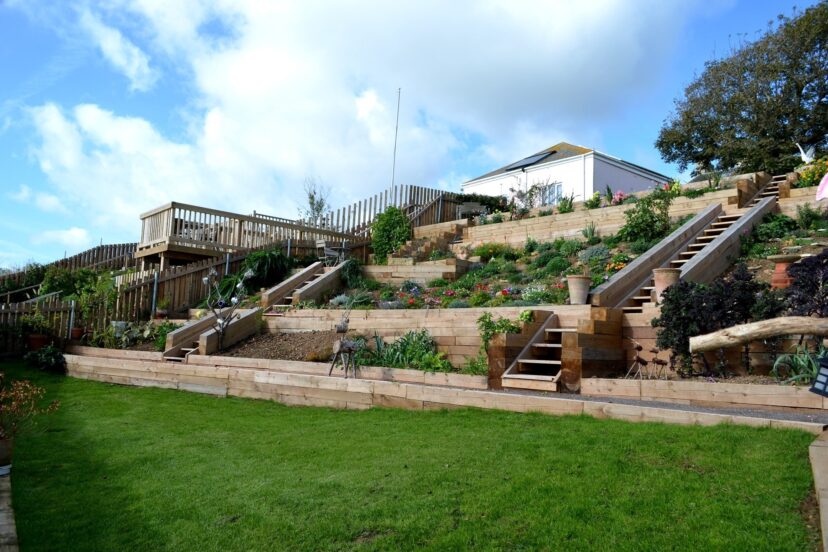
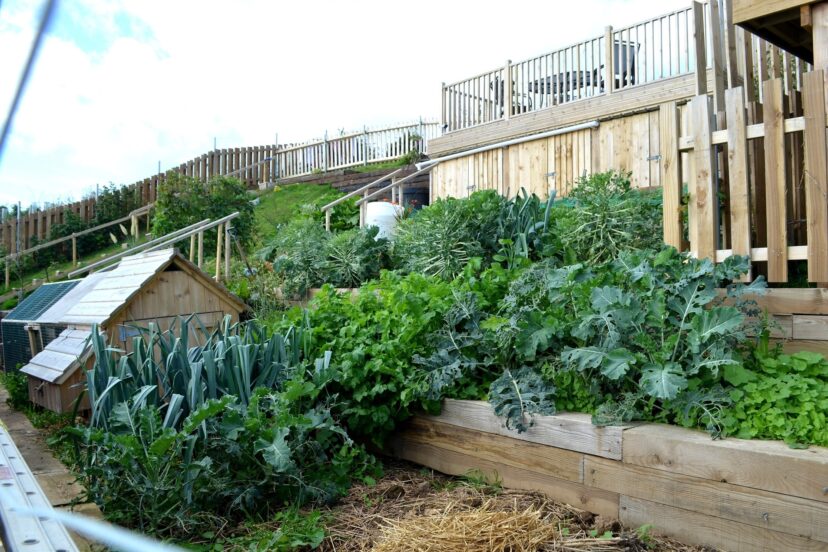
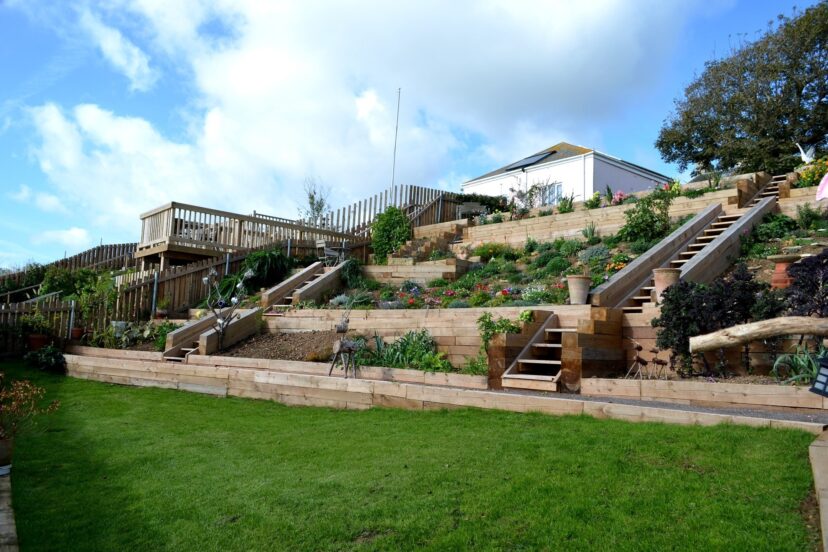
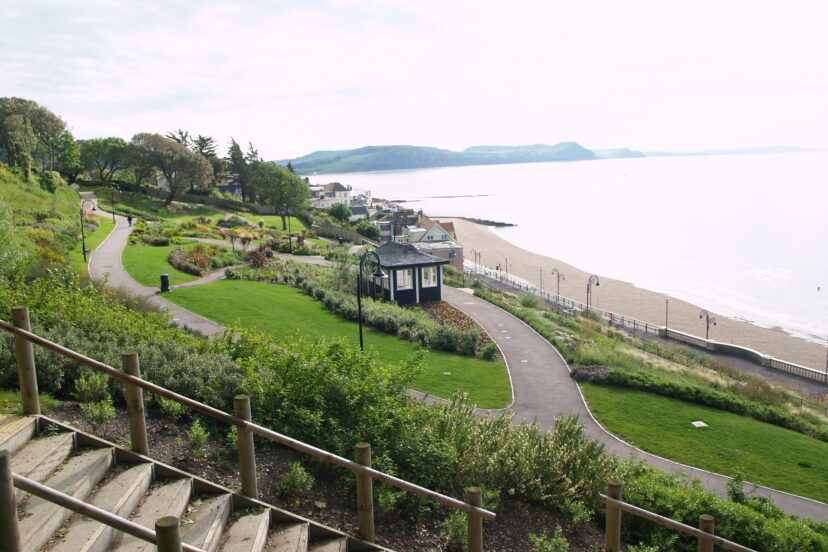
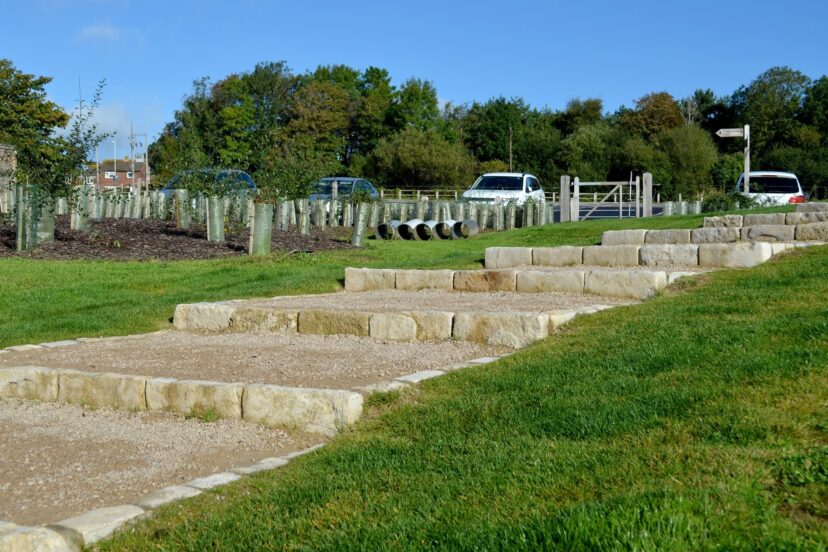
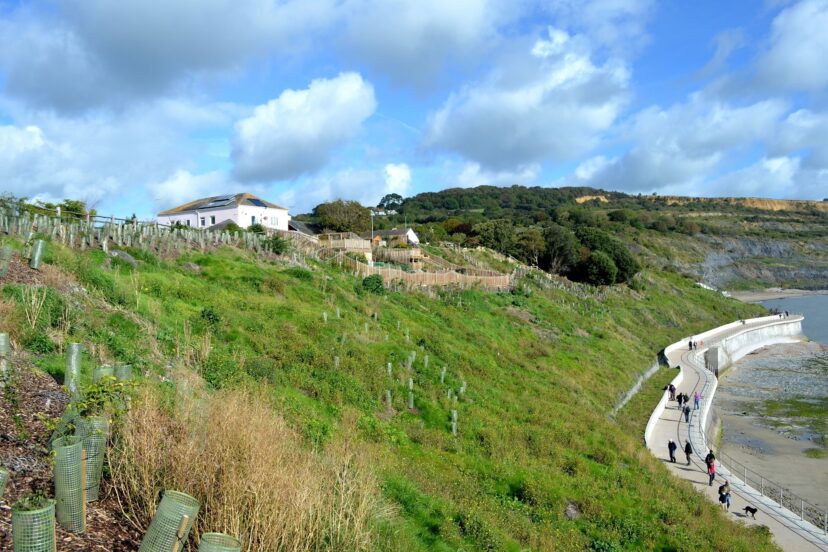
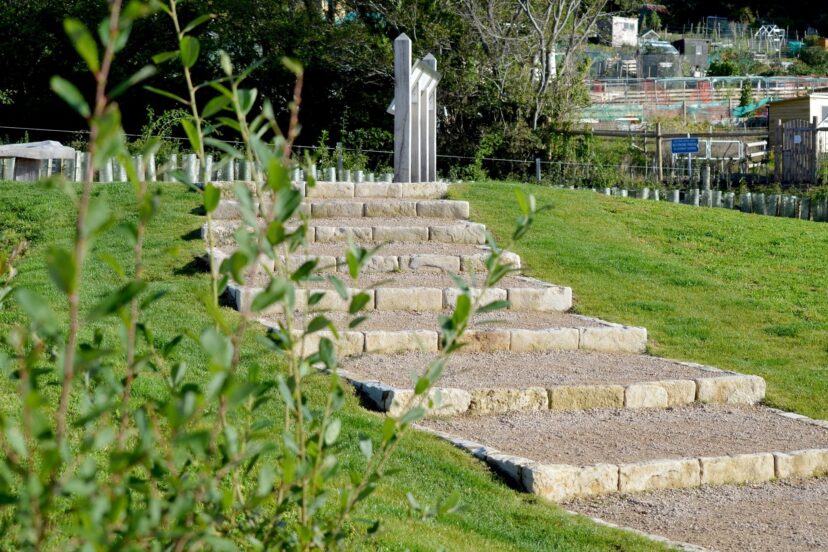
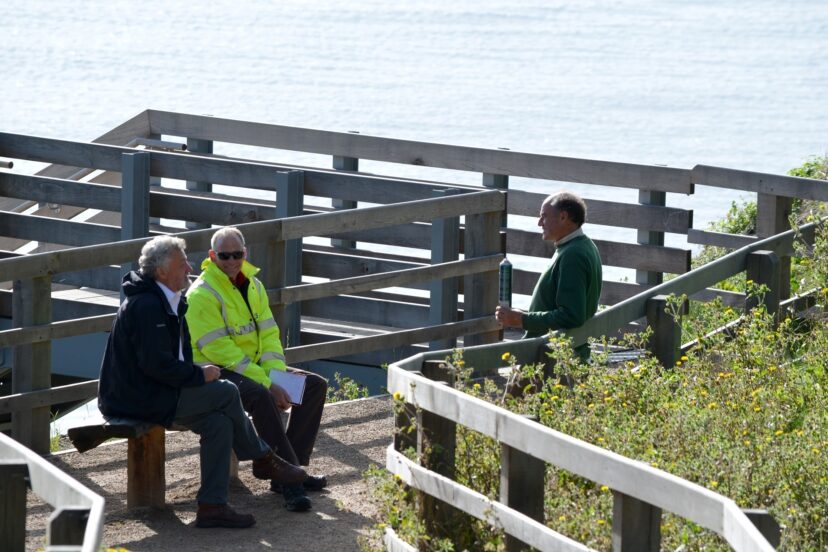
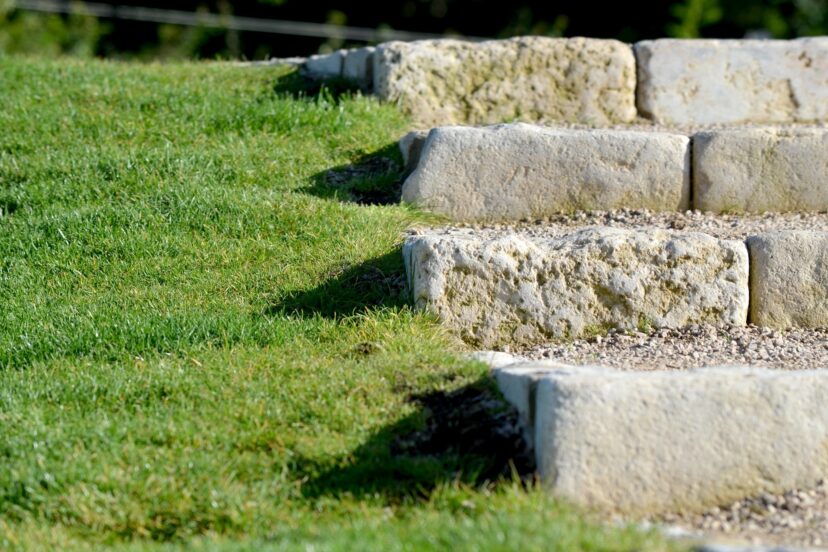
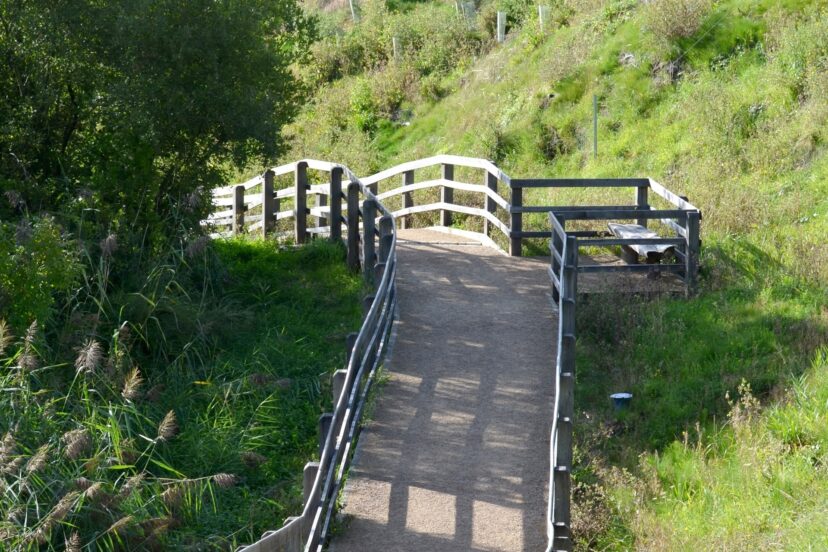
Lyme Regis Cliff Stabilisation and Landscaping
The landscape works took place on the Jurassic Coast cliffs of this World Heritage Site depicting 185 million years of the earth’s history. It is also an SSSI, the coastal erosion forming unique habitats for flora and fauna. It was a huge balancing act between the protection of property and nature conservation. 480 properties, the main road into the town of Lyme Regis and major utility pipes and cables needed to be protected from coastal erosion. Land had been lost to the sea at the rate of 300 feet in the last 300 year period. In 2003 a major slip left Church Cliff Flats only 75 feet from the receding cliff face. The house owner stated ‘‘we used to go to bed with our life jackets on and even started to inflate them, my garden shed became a beach hut overnight’’. On completion of the works this resident kindly hung a large banner for all to see. It simply said ‘THANKYOU’ and reflected the gratitude of the residents to all who had worked on the project. The works involved:
- Sensitive timely clearance of allvegetation to allow engineering works
- Reestablishment of valuable woodland and grassland scrub habitats
- Management of active landslide habitat
- The creation of an access path and viewing area across the cliff acting as a link betweenthe main car park, sea wall and town
- Building a new sea wall including steel steps, piling ,nailing and netting (carried out by others)
- The reinstatement of 14 gardens demolished by erosion and engineering works
- The reestablishment of 17 allotments
This work was made all the more challenging by the extreme gradient of the site. Much of the work had to be done using rope access so our staff had to be IRATA trained. There was Japanese knotweed on the site which caused further operational constraints and even the bramble had to be removed from site, propagated in our nursery and returned to site on completion, due to ecological considerations. The engineering works of piling nailing and netting posed further challenges as we tried to build structures on top of this and reinstate gardens. Prior to the installation of the soil retaining net we had to create planting pockets with compost and GPS mark each and every one. Later once the net was in place we were able to relocate the holes and plant through it to re-establish vegetation. Much of the 1600 tonnes of topsoil imported had to be laid over the net and on considerable slopes without causing any damage to the mesh. Fencing also had to be designed and erected as boundaries to gardens with the same constraints. Very close liaison was required between ourselves, the main contractor and the client being the District Council. We more than met their expectations as we were constantly required to design, adapt and build landscape elements that had not been used in these circumstances before. We had to work very closely with each one of the owners of the rebuilt gardens and reinstated allotments to deliver projects which they were all delighted with.










